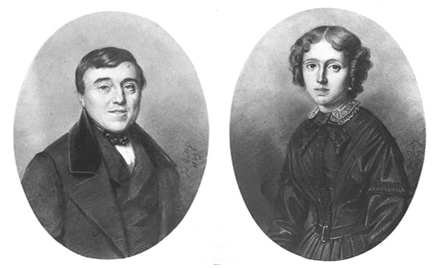
жңҖж–°гҒ®иЁҳдәӢ
 гғ–гғӘгғӮгӮ№гғҲгғізҫҺиЎ“йӨЁгҒҢгӮ«гӮӨгғҰгғңгғғгғҲгҒ®гҖҠгӮӨгӮЁгғјгғ«гҒ®е№іеҺҹгҖӢгӮ’ж–°жүҖи”өпјҶеұ•зӨә
гғ–гғӘгғӮгӮ№гғҲгғізҫҺиЎ“йӨЁгҒҢгӮ«гӮӨгғҰгғңгғғгғҲгҒ®гҖҠгӮӨгӮЁгғјгғ«гҒ®е№іеҺҹгҖӢгӮ’ж–°жүҖи”өпјҶеұ•зӨә
гғ©гғігғҖгғ иЎЁзӨә
 家系еӣігӮ’гҒӨгҒҸгҒЈгҒҰгҒҝгҒҫгҒ—гҒҹгҖң
家系еӣігӮ’гҒӨгҒҸгҒЈгҒҰгҒҝгҒҫгҒ—гҒҹгҖң
- 2015е№ҙ2жңҲ (2)
- 2014е№ҙ12жңҲ (4)
- 2014е№ҙ11жңҲ (2)
- 2014е№ҙ5жңҲ (2)
- 2014е№ҙ3жңҲ (1)
- 2013е№ҙ12жңҲ (3)
- 2013е№ҙ11жңҲ (1)
- 2013е№ҙ10жңҲ (1)
- 2013е№ҙ8жңҲ (2)
- 2013е№ҙ3жңҲ (3)
- 2013е№ҙ2жңҲ (2)
- 2013е№ҙ1жңҲ (3)
- 2012е№ҙ9жңҲ (3)
- 2012е№ҙ4жңҲ (1)
- 2012е№ҙ2жңҲ (2)
- 2011е№ҙ10жңҲ (4)
- 2011е№ҙ9жңҲ (5)
- 2011е№ҙ8жңҲ (5)
- 2011е№ҙ7жңҲ (8)
- 2011е№ҙ4жңҲ (2)
- 2011е№ҙ2жңҲ (1)
- 2010е№ҙ12жңҲ (2)
- 2010е№ҙ10жңҲ (3)
- 2010е№ҙ9жңҲ (4)
- 2010е№ҙ8жңҲ (2)
- 2010е№ҙ7жңҲ (5)
- 2010е№ҙ6жңҲ (6)
- 2009е№ҙ11жңҲ (1)
- 2009е№ҙ6жңҲ (30)
- 2009е№ҙ3жңҲ (1)
- 2009е№ҙ2жңҲ (4)
- 2009е№ҙ1жңҲ (6)
- 2008е№ҙ12жңҲ (6)
- 2008е№ҙ11жңҲ (6)
- 2008е№ҙ10жңҲ (12)
- 2008е№ҙ9жңҲ (1)
- 2008е№ҙ7жңҲ (1)
- 2008е№ҙ6жңҲ (11)
- 2008е№ҙ5жңҲ (3)
- 2008е№ҙ3жңҲ (9)
- 2008е№ҙ2жңҲ (2)
- 2008е№ҙ1жңҲ (8)
- 2007е№ҙ12жңҲ (1)
- 2007е№ҙ11жңҲ (4)
- 2007е№ҙ9жңҲ (9)

еҪ“жҷӮгҒ®дәәгҒҢй©ҡгҒ„гҒҹиүІеҪ©ж„ҹиҰҡгҒ§жҸҸгҒӢгӮҢгҒҹ гҖҢгӮігғӯгғігғ–гҒ®дёҳгҖҚ

1884 е№ҙ гӮ«гғігғҙгӮЎгӮ№гҒ«жІ№еҪ© 60.2Г—73.3cm
дҪңе“ҒжҰӮиҰҒгҒҜгҒ“гҒЎгӮү
гҖҢпјҲгғүгғјгғ“гғӢгғјгҒ®пјүгҖҠиҠұе’ІгҒҸжһңжЁ№гҒ®гҒӮгӮӢиҚүеҺҹгҖӢгҒЁжҜ”гҒ№гӮӢгҒЁгҖҒеҪ“жҷӮгҒ®дәәгҖ…гҒҢеҚ°иұЎжҙҫгҒ®дҪңе“ҒгҒ«й©ҡж„•гҒ—гҖҒеҪ“жғ‘гҒ•гҒӣгӮүгӮҢгҒҹзҗҶз”ұгҒҢзҗҶи§ЈгҒ§гҒҚгӮӢгҖҚ
гҒ“гӮҢгҒҜгҒ“гҒ®дҪңе“ҒгҒ®и§ЈиӘ¬гҒ®дёҖж–ҮгҒ§гҒҷгҒҢгҖҒж®ӢеҝөгҒӘгҒҢгӮүз§ҒгҒҹгҒЎгҒҜгҒқгӮҢгӮ’еҝ е®ҹгҒ«зҗҶи§ЈгҒҷгӮӢгҒ“гҒЁгҒҜйӣЈгҒ—гҒ„гҒ§гҒ—гӮҮгҒҶгҖӮ

зҸҫеңЁгҒ“гҒ®дё–з•ҢгҒҜе…үгҒ«гӮӮиүІгҒ«гӮӮгҒӮгҒөгӮҢгҒҰгҒ„гӮӢгҒ—гҖҒгӮӮгҒЈгҒЁгҒ©гҒҺгҒӨгҒ„гӮӮгҒ®гӮӮгҒҹгҒҸгҒ•гӮ“гҒӮгӮҠгҒҫгҒҷгҖӮ
е…үгҒҢиүІгҖ…гҒӘиүІгӮ’еҗ«гӮ“гҒ§гҒ„гӮӢгҒ“гҒЁгӮ’зҹҘгҒЈгҒҰгҒ„гҒҫгҒҷгҒ—
дёҳгҒҢгғ”гғігӮҜиүІгҒ«гҒҝгҒҲгӮӢгҒ“гҒЁгҒҢгҒӮгӮӢгҒ“гҒЁгҒ гҒЈгҒҰеҲҶгҒӢгҒЈгҒҰгҒ„гҒҫгҒҷгҖӮ
зү№гҒ«еӨ–еӣҪгҒ«иЎҢгҒҸгҒЁеңҹгҒҢгғ”гғігӮҜе‘ігӮ’еёҜгҒігҒҰгҒ„гӮӢгҒ“гҒЁгҒҜгҒҚгҒЈгҒЁгҒӮгӮӢгҒ§гҒ—гӮҮгҒҶгҖӮ
гҒқгҒ—гҒҰ画家гҒҢдҪ•гӮ’гҒ©гҒ®гӮҲгҒҶгҒӘиүІгҒ§жҸҸгҒ“гҒҶгҒҢгҒқгӮҢгҒ»гҒ©гҒҹгҒ„гҒ—гҒҹгҒ“гҒЁгҒ§гҒҜгҒӘгҒ„гҒ®гҒ§гҒҷгҒӢгӮүгҖӮ
йҖҶгҒ«гҒ©гҒҶгҒ—гҒҰдёҳгӮ’гғ”гғігӮҜгҒ§жҸҸгҒ„гҒҰгҒҜгҒ„гҒ‘гҒӘгҒӢгҒЈгҒҹгҒ®гҒ§гҒ—гӮҮгҒҶпјҹ
гҖҖпјӢгҖҖгҖҖпјӢгҖҖгҖҖпјӢ
дҫӢгҒҲгҒ°ж—Ҙжң¬гҒ§гҒҜгҖҒеӨӘйҷҪгҒҜиөӨгҒ„иүІгҒ§жҸҸгҒӢгӮҢгҒҫгҒҷгҖӮиҷ№гҒҜдёғиүІгҒЁжұәгҒҫгҒЈгҒҰгҒ„гҒҫгҒҷгҖӮ
гҒ—гҒӢгҒ—е®ҹйҡӣж—ҘдёӯгҒ®еӨӘйҷҪгҒҜиөӨгҒ„гҒӢгҒЁгҒ„гҒҶгҒЁгӮҖгҒ—гӮҚзҷҪгҒ„гҒ—гҖҒ
еӨ–еӣҪгҒ§гҒҜиҷ№гҒ®иүІж•°гҒҜгҒқгӮҢгӮҲгӮҠгӮӮе°‘гҒӘгҒ„ж•°гҒ гҒЁгҒ„гӮҸгӮҢгҒҰгҒ„гҒҫгҒҷгҖӮ
з§ҒгҒҹгҒЎгҒҢзҷҪгҒ„еӨӘйҷҪгҒҢз…§гӮҠгҒӨгҒ‘гҖҒ3иүІгҒ®иҷ№гҒҢжһ¶гҒӢгҒЈгҒҰгҒ„гӮӢзөөгӮ’гҒҝгҒҹгӮүгҒҚгҒЈгҒЁгҖҢгҒӮгӮҢпјҹгҖҚгҒЁжҖқгҒҶгҒ§гҒ—гӮҮгҒҶгҖӮ
гҒқгҒ®гҖҢпјҹгҖҚгҒ®ж°—жҢҒгҒЎгҒҢгҖҢпјҹпјҹпјҹпјҹпјҹпјҹпјҹпјҹпјҹпјҹпјҹпјҹпјҹпјҹпјҹвҶ’жҖ’гҖҚгҒ«гҒӘгҒЈгҒҹгҒ®гҒҢ
еҪ“жҷӮгҒ®еҚ°иұЎжҙҫгҒ«еҜҫгҒҷгӮӢеӨ§иЎҶгҒ®ж„ҹиҰҡгҒӘгҒ®гҒӢгӮӮгҖӮ
еҪұгҒҜй»’гҖӮеңҹгҒҜиҢ¶иүІгҖҒжңЁгҖ…гҒ®иүІгҒҜиҗҪгҒЎзқҖгҒ„гҒҰгҖӮ
зӯҶиҮҙгҒҜдёҒеҜ§гҒ«гҖӮз”»йқўгҒ®йҡ…гҖ…гҒҫгҒ§ж°—гӮ’й…ҚгӮҠгҖҒзҝ’дҪңгӮӮжҸҸгҒҚеҝөе…ҘгӮҠгҒ«гҖӮ
гҒқгҒ—гҒҰдё»йЎҢгҒ«гҒҜгғ’гӮЁгғ©гғ«гӮӯгғјгҒҢгҖӮ
гӮ“гғјгҖҒгҒ“гҒ®жҷӮд»ЈгҒҜзөөз”»гҒЁгҒҜгҒ“гҒҶгҒӮгӮӢгҒ№гҒҚгҒ гҒЁгҒ„гҒҶжұәгҒҫгӮҠгҒҢгӮӮгҒ®гҒҷгҒ”гҒҸгҒӮгҒЈгҒҹгӮҸгҒ‘гҒ§гҒҷгҖӮ
гҒ“гҒ®гҖҢгӮігғӯгғігғ–гҒ®дёҳгҖҚгҒҜз”»йқўгӮ„еҚ°еҲ·зү©гҒ§иҰӢгӮӢгӮҲгӮҠгӮӮгҖҒгӮӮгҒЈгҒЁиүІгҒҢжҙҫжүӢгҒ§гҖҒ
гҒЁгҒҸгҒ«з·‘гҒ®дёҳгҒ®йғЁеҲҶгҒҜгҖҢеЎ—гҒЈгҒҹгҒҸгҒЈгҒҰгҒӮгӮӢгҖҚгҒЁгҒ„гҒҶеҚ°иұЎгҒ•гҒҲеҸ—гҒ‘гҒҫгҒ—гҒҹгҖӮ
гҒқгҒ—гҒҰдҪңе“ҒгҒҢгғүгғјгғ“гғӢгғјгҒ®гӮӮгҒ®гӮҲгӮҠе°‘гҒ—еӨ§гҒҚгҒ„гҒ“гҒЁгӮӮгҖҒ
зӯҶгҒҢйӣ‘гҒӘж„ҹгҒҳгӮ’гӮҲгӮҠдёҺгҒҲгҒҹгҒӢгӮӮзҹҘгӮҢгҒҫгҒӣгӮ“гҖӮ
дҝқе®Ҳзҡ„гҒӘдәәгҒ«гҒҜеҸ—гҒ‘е…ҘгӮҢгҒҢгҒҹгҒ„дҪңе“ҒгҒ гҒЈгҒҹгҒ§гҒ—гӮҮгҒҶгҖӮ
зөөз”»гҒ®жөҒгӮҢгҒ®дёӯгҒ§гҖҒгҒ„гҒҸгҒӨгҒӢгҒ®жөҒиЎҢйҒ…гӮҢгҒӘдҪңйўЁгҒҢгҒ§гҒҚгҒҹгӮҠ
з•°з«ҜгҒӘ画家гҒҢзҸҫгӮҢгҒҹгҒ“гҒЁгҒҜгҒӮгҒЈгҒҰгӮӮ
гҒ“гӮ“гҒӘгҒ«еӨ§иЎҶгҒ®ж„ҹиҰҡгҒҢгҒІгҒЈгҒҸгӮҠиҝ”гӮӢгӮҲгҒҶгҒӘгҒ“гҒЁгҒЈгҒҰгҒӘгҒӢгҒЈгҒҹгӮ“гҒҳгӮғгҒӘгҒ„гҒ§гҒ—гӮҮгҒҶгҒӢгҖӮ
гҒ“гҒҶгҒ—гҒҰгӮ«гӮӨгғҰгғңгғғгғҲгҒЁгғүгғјгғ“гғӢгғјгҒЁжҜ”гҒ№гҒҰгҒҝгҒҰгӮӮ
гҒқгӮ“гҒӘгҒ«жҖ’гӮӢгҒ“гҒЁгҒӘгҒ„гҒҳгӮғгҒӘгҒ„гҒЈгҒҰжҖқгҒЈгҒЎгӮғгҒ„гҒҫгҒҷгҒ‘гҒ©гҒӯгҖӮ
гӮўгғігғҶгғҠж„ҹеәҰдҪҺгҒ„гҒӢгҒӘгғ»гғ»гғ»жұ—
гҖҖпјӢгҖҖгҖҖпјӢгҖҖгҖҖпјӢ
гӮ«гӮӨгғҰгғңгғғгғҲгҒҢгҒ“гҒ®дҪңе“ҒгӮ’жҸҸгҒ„гҒҹ1884е№ҙй ғгҖҒ
еҫҢжңҹеҚ°иұЎжҙҫгҖҒж–°еҚ°иұЎжҙҫгӮӮеҸ°й ӯгҒ—гҖҒ
д»–гҒ®еҚ°иұЎжҙҫгҒ®з”»е®¶гҒҹгҒЎгӮӮиҮӘеҲҶгҒҹгҒЎгҒ®ж–°гҒҹгҒӘгӮ№гғҶгғјгӮёгҒ«йҖІгӮ“гҒ§гҒ„гҒҚгҒҫгҒ—гҒҹгҖӮ
гҒқгҒ®дёӯгҒ§гӮ«гӮӨгғҰгғңгғғгғҲгҒҜйҖҶгҒ«гҒ“гҒ®гҖҢгӮігғӯгғігғ–гҒ®дёҳгҖҚгҒ®гӮҲгҒҶгҒ«гҖҢеҚ°иұЎдё»зҫ©зҡ„гҖҚгҒӘдҪңе“ҒгӮ’жҸҸгҒҸгҒ“гҒЁгҒҢеӨҡгҒҸгҒӘгҒЈгҒҰгҒ„гҒҚгҒҫгҒ—гҒҹгҖӮ
————————————————-
гҖҗеӣійҢІи§ЈиӘ¬гҖ‘
гҖҢе…үгӮ’жҸҸгҒҸеҚ°иұЎжҙҫеұ•вҲ’зҫҺиЎ“йӨЁгҒҢи§ЈгҒ„гҒҹи¬ҺвҲ’гҖҚеұ•иҰ§дјҡеӣійҢІP44гӮҲгӮҠ
————————————————-
д»ҘдёӢгҒҜгҖҢе…¬ејҸгҒ®иӘҝжҹ»е ұе‘ҠгӮөгӮӨгғҲгҖҚгӮ’зҝ»иЁігҒ—гҒҹгӮӮгҒ®гҒ§гҒҷгҖӮ
пјҲй–“йҒ•гҒ„гҒҢгҒӮгӮҠгҒҫгҒ—гҒҹгӮүгҒ©гҒҶгҒһгҒ”жҢҮж‘ҳгҒҸгҒ гҒ•гҒ„mmпјү
и©ізҙ°еӣігҒҜгҒ“гҒ“гҒ«ијүгҒӣгҒҰгҒ„гҒҫгҒӣгӮ“гҒ®гҒ§гғӘгғігӮҜе…ҲгӮ’гҒ”зўәиӘҚгҒҸгҒ гҒ•гҒ„гҖӮ
дҪңе“ҒгӮ№гғҡгғғгӮҜгҒӘгҒ©гҒҜгҒҫгҒҹеҫҢгҒ»гҒ©гҒҫгҒЁгӮҒгҒҰгҖӮ
————————————————-
гҖҢгӮігғӯгғігғ–гҒ®дёҳгҖҚгҒҜ1884е№ҙгҒ«жҸҸгҒӢгӮҢгҒҹгғ—гғҶгӮЈгӮёгғЈгғігғҢгғҙгӮЈгғӘгӮЁиҝ‘гҒҸгҒ®жҲёеӨ–гҒ®жҷҜиүІгҒ®зҝ’дҪңгҒ®гҒІгҒЁгҒӨгҒ гҖӮ
[Berhaut 1994, p. 182-183, еҸӮз…§пјҡ Caillebotte WRM Dep. FC 561]
гӮ«гӮӨгғҰгғңгғғгғҲгҒҜжЁҷжә–зҡ„гҒӘF20гӮөгӮӨгӮәгҒ®гҖҒгҒӮгӮүгҒӢгҒҳгӮҒзҷҪгҒҸдёӢеЎ—гӮҠгӮ’гҒ»гҒ©гҒ“гҒ•гӮҢгҒҹгӮ«гғігғҙгӮЎгӮ№гӮ’дҪҝз”ЁгҒ—гҒҰгҒ„гӮӢгҖӮ
иЈҸйқўгҒ«гҒӮгӮӢиІ©еЈІе…ғгҒ®гӮ№гғҶгғігӮ·гғ«гҒ«гӮҲгӮӢгҒЁгҖҒеҪјгҒҜгӮ«гғігғҙгӮЎгӮ№гӮ’гғ‘гғӘгҒ®з”»жқҗеә—гҖҢгғҮгғҘгғ“гғҘгӮ№гҖҚгҒ§иіје…ҘгҒ—гҒҰгҒ„гҒҹгӮҲгҒҶгҒ§гҒӮгӮӢгҖӮ
[еҸӮз…§пјҡ Caillebotte WRM Dep. 828, WRM Dep. FC 561, WRM Dep. FC 689, WRM Dep. 622] (еӣі2)
гӮ«гӮӨгғҰгғңгғғгғҲгҒҜдёӢжҸҸгҒҚгӮ’гҒӣгҒҡгҖҒгғўгғҒгғјгғ•гҒ®еәғгҒ„гӮЁгғӘгӮўгҒ«е№…гҒ®еәғгҒ„гғ–гғ©гӮ·гӮ№гғҲгғӯгғјгӮҜгҒ§еӢўгҒ„гӮҲгҒҸиүІгӮ’еЎ—гҒЈгҒҹгҖӮ
гҒқгҒ—гҒҰгҖҒжҝҖгҒ—гҒ„гғ–гғ©гӮ·гғҜгғјгӮҜгҒӢгӮүиҖғгҒҲгӮӢгҒЁгҖҒеҲ¶дҪңгӮ’з¶ҡиЎҢгҒҷгӮӢеүҚгҒ«гҒ“гҒ®иүІгҒ®ең°еЎ—гӮҠгӮ’е®Ңе…ЁгҒ«д№ҫгҒӢгҒ—гҒҹгҒ®гҒ гӮҚгҒҶгҖӮ
гҒқгҒ®жҝҖгҒ—гҒ„гғ–гғ©гӮ·гғҜгғјгӮҜгҒҜдҪңе“ҒгҒ®еӨҡгҒҸгҒ®з®ҮжүҖгҒ§иҰӢгӮӢгҒ“гҒЁгҒҢгҒ§гҒҚгҖҒгҒҫгҒҹеҲ¶дҪңеҫҢеҚҠгҒ§гҒҜгҒ„гҒҸгҒӨгҒӢгҒ®з®ҮжүҖгҒ§гҖҒдҫӢгҒҲгҒ°з”»йқўе·ҰжүӢеүҚгҒ®гӮҲгҒҶгҒ«гҖҒгғ–гғ©гӮ·гғҜгғјгӮҜгӮ’пјҲгҒқгӮҢгҒҫгҒ§зөөз”»еёёиӯҳгҒ§гҒӮгӮӢгҒ®дёҒеҜ§гҒӘзӯҶиҮҙгҒЁйҒ•гҒЈгҒҰпјүи‘—гҒ—гҒҸгҖҢйҖёи„ұгҖҚгҒ•гҒӣгҒҰгҒ„гӮӢгӮҲгҒҶгҒ гҖӮ (еӣі3, 8, 10)
з·‘гҒ®йҮҺеҺҹгҒҢзҒ°гғ”гғігӮҜиүІгҒ§ең°еЎ—гӮҠгҒ•гӮҢгҒҰгҒ„гӮӢгӮҲгҒҶгҒ«гҖҒиүІгҒ®дёӯгҒ«гӮӮгҖҢи„ұз·ҡгҖҚгҒҢиҰӢгӮүгӮҢгӮӢгҖӮ(еӣі11)
гҒ“гҒ®гҒ“гҒЁгҒҜгӮ«гӮӨгғҰгғңгғғгғҲгҒҢеҲ¶дҪңгҒ®йҒҺзЁӢгҒ§гҒ“гҒ®йғЁеҲҶгӮ’еӨүжӣҙгҒ—гҒҹгҒ®гҒ гҒЁгҒ„гҒҶгҒ“гҒЁгӮ’зӨәгҒ—гҒҰгҒ„гӮӢгҖӮ
дёӢжҸҸгҒҚгҒ®еҫҢгҒ®д»•дёҠгҒ’гҒҜгҖҒгҒҠгҒқгӮүгҒҸгӮҰгӮ§гғғгғҲгғ»гӮӨгғігғ»гӮҰгӮ§гғғгғҲгҖҒгӮҰгӮ§гғғгғҲгғ»гӮӘгғігғ»гғүгғ©гӮӨгҒЁгҒ„гҒЈгҒҹ2гҖҒ3гҒ®йҒҺзЁӢгӮ’зөҢгҒҹгҒ®гҒ гӮҚгҒҶгҖӮ
гҒҷгҒ§гҒ«гӮ«гӮӨгғҰгғңгғғгғҲгҒ®д»–гҒ®дҪңе“ҒгҒ®дёӯгҒ§гӮҸгҒӢгҒЈгҒҰгӮӢгӮҲгҒҶгҒ«гҖҒгҒ“гҒ®дҪңе“ҒгӮӮжҲёеӨ–гҒ§жҸҸгҒӢгӮҢгҒҹеҸҜиғҪжҖ§гҒҢгҒӮгӮӢгҖӮ
дҫӢгҒҲгҒ°дёӢз«ҜдёӯеӨ®гҒ®еұӢеӨ–з”ЁгӮӨгғјгӮјгғ«гҒ®з•ҷгӮҒе…·иЈ…зҪ®гҒ®дҪҝгӮҸгӮҢгҒҹйғЁеҲҶгҒ«гҒҜзөөгҒ®е…·гҒҢеЎ—гӮүгӮҢгҒҰгҒ„гҒӘгҒ„гҒ®гҒ гҖӮ
[Lewerentz 2008, p. 278-279, 282] (еӣі9)
гҒҫгҒҹгҖҒзёҒгҒ«гҒҜгҒҫгҒ зөөгҒ®е…·гҒҢд№ҫгҒ„гҒҰгҒ„гҒӘгҒ„гҒЁгҒҚгҒ«гӮ«гғігғҙгӮЎгӮ№гӮ’дёҚжіЁж„ҸгҒ«жүұгҒЈгҒҹгҒЁжҖқгӮҸгӮҢгӮӢгӮҲгҒҶгҒӘи·ЎгӮ„еҲҘгҒ®дҪңе“ҒгҒ®зөөгҒ®е…·гҒҢж®ӢгҒЈгҒҰгҒ„гӮӢгҖӮ(еӣі10)
еҸідёӢгҒ®й»’гҒ„гӮөгӮӨгғігҒҜгғҷгғӯгғјгҒ«гӮҲгҒЈгҒҰгӮ№гӮҝгғігғ—гҒ гҒЁеҲҶйЎһгҒ•гӮҢгҒҰгҒ„гҒҹгҒҢгҖҒгӮҲгӮҠи©ізҙ°гҒӘз ”з©¶гҒ«гӮҲгҒЈгҒҰгҒ“гӮҢгҒҜгӮ№гӮҝгғігғ—гҒ§гҒҜгҒӘгҒҸгҖҒжүӢгҒ§жӣёгҒӢгӮҢгҒҹгӮӮгҒ®гҒ гҒЁгҒ„гҒҶгҒ“гҒЁгҒҢеҲӨжҳҺгҒ—гҒҹгҖӮ[Berhaut 1994, p. 182]
гҒҹгҒЁгҒҲгҒқгҒҶгҒ§гҒӮгҒЈгҒҰгӮӮгӮ«гӮӨгғҰгғңгғғгғҲиҮӘиә«гҒ®жүӢгҒ«гӮҲгӮӢгӮӮгҒ®гҒ§гҒҜгҒӘгҒ„гҖӮ(еӣі6)
гҒҠгҒқгӮүгҒҸејҹгғһгғ«гӮ·гғЈгғ«гҒӢйҒәиЁҖеҹ·иЎҢдәәгҒ®гғ«гғҺгғҜгғјгғ«гҒ®жүӢгҒ«гӮҲгӮӢгӮӮгҒ®гҒ§гҖҒеҪјгӮүгҒҜгӮ«гӮӨгғҰгғңгғғгғҲгҒ®жӯ»еҫҢгҖҒгҒ„гҒҸгҒӨгӮӮгҒ®з”»е®¶гҒ®зөөгҒ«гӮөгӮӨгғігӮ’ж–ҪгҒ—гҒҹгҒ®гҒ гҖӮ
[Berhaut 1994, p. 60, еҸӮз…§пјҡ Caillebotte WRM Dep. FC 689, WRM Dep. 622, WRM Dep. 828]
и©ізҙ°еӣі2пјҡпјҲе°Ҹз”»еғҸдёҠпјүиЈҸйқўгҒ«гҒӮгӮӢз”»жқҗеұӢгғҮгғҘгғ“гғҘгҒ®гғһгғјгӮҜгҖӮпјҲе°Ҹз”»еғҸдёӢпјүдёӢжһ гҒ®зІҳзқҖзҙҷгӮ’дёҖйғЁгҒҜгҒҢгҒ—гҒҹж§ҳеӯҗгҖӮиөӨеӨ–з·ҡгҒ§иҰӢгӮӢгҒЁж–Үеӯ—гҒҢжӣёгҒӢгӮҢгҒҰгҒ„гҒҹгҒ“гҒЁгҒҢгӮҸгҒӢгӮӢпјҲгғўгғҺгӮҜгғӯз”»еғҸпјүгҖӮ
и©ізҙ°еӣі3пјҡж–ңе…үгӮ’гҒӮгҒҰгҒҹж§ҳеӯҗ
и©ізҙ°еӣі4пјҡйҖҸйҒҺе…үз·ҡеҶҷзңҹ
и©ізҙ°еӣі5пјҡзҙ«еӨ–з·ҡеҶҷзңҹ
и©ізҙ°еӣі6пјҡзІҫеҜҶйЎ•еҫ®йҸЎгҒ«гӮҲгӮӢгӮөгӮӨгғіи©ізҙ°гҖӮпјҲ1зӣ®зӣӣ=1mmпјү
и©ізҙ°еӣі7пјҡж–ңе…үгӮ’гҒӮгҒҰгҒҹж§ҳеӯҗгҒ®и©ізҙ°гҖӮдёҳгҒ®й ӮдёҠйғЁеҲҶгҒ®зӯҶйҒӢгҒігҒҢиӯҳеҲҘгҒ§гҒҚгӮӢгҖӮ
и©ізҙ°еӣі8пјҡж–ңе…үгӮ’гҒӮгҒҰгҒҹж§ҳеӯҗгҒ®и©ізҙ°гҖӮдёӢеЎ—гӮҠгҒ®еҺҡеЎ—гӮҠгҒ§зҹӯгҒ„гӮҝгғғгғҒгҒ®гғ–гғ©гӮ·гӮ№гғҲгғӯгғјгӮҜгҒ®иіӘж„ҹгҒҢгҖҒдёҠгҒӢгӮүеЎ—гҒЈгҒҹзөөгҒ®е…·еұӨгӮ’йҖҡгҒ—гҒҰгӮҸгҒӢгӮӢгҖӮгҒқгӮҢгҒҜдёҠгҒ®зөөгҒ®е…·еұӨгҒӢгӮүгҒҝгӮӢгҒЁгҖҒгғӘгӮәгғ гӮ„ж–№еҗ‘гҒҢжүҖгҖ…гҒ§гҒӢгҒӘгӮҠйҖёи„ұгҒ—гҒҰгҒ„гӮӢгҖӮ
и©ізҙ°еӣі9пјҡдҪңе“ҒдёӢйғЁгҒ®и©ізҙ°гҖӮзөөгҒ®е…·гҒҢеЎ—гӮүгӮҢгҒҰгҒ„гҒӘгҒ„йғЁеҲҶгҒҜгҒҠгҒқгӮүгҒҸгӮӨгғјгӮјгғ«гҒ®з•ҷгӮҒе…·гҒ«еӣәе®ҡгҒ•гӮҢгҒҰгҒ„гҒҹгҒ®гҒ гӮҚгҒҶгҖӮ
и©ізҙ°еӣі10пјҡпјҲе·Ұпјҡж–ңе…үгӮ’гҒӮгҒҰгҒҹж§ҳеӯҗгҒ®и©ізҙ°пјүдҪңе“ҒгҒҢд№ҫгҒҸеүҚгҒ«дёҚжіЁж„ҸгҒ«еҸ–гӮҠжүұгҒЈгҒҹгҖҒжҠјгҒ•гӮҢгҒҰеҮәжқҘгҒҹзёҰз·ҡгҒҢгҒӨгҒ„гҒҹйғЁеҲҶгҖӮпјҲеҸіпјҡе…Ҙе°„е…үгӮ’гҒӮгҒҰгҒҹж§ҳеӯҗгҒ®и©ізҙ°пјүеӨүгӮҸгҒЈгҒҹеҪўгҒ®йқ’гҒ„зөөгҒ®е…·гҒ®д»ҳзқҖ
и©ізҙ°еӣі11пјҡжүӢеүҚиҚүең°гҒ®дёӯгҒ«гғ”гғігӮҜиүІгҒ®дёӢең°гҒҢиҰӢгҒҲгӮӢгҖӮйЎ•еҫ®йҸЎеҶҷзңҹпјҲ1зӣ®зӣӣ=1mmпјү
и©ізҙ°еӣі12пјҡдёҳй ӮдёҠгҒ®зҷҪгҒ„еҺҡеЎ—гӮҠйғЁеҲҶгҒ«гҒҝгӮүгӮҢгӮӢгӮҰгӮ§гғғгғҲгғ»гӮӨгғігғ»гӮҰгӮ§гғғгғҲгҒ®ж··иүІгҒ®ж§ҳеӯҗгҖӮйЎ•еҫ®йҸЎеҶҷзңҹпјҲ1зӣ®зӣӣ=1mmпјү
и©ізҙ°еӣі13пјҡйЎ•еҫ®йҸЎеҶҷзңҹгҒ§гҒҝгӮӢз©әгҒ®зҷҪгҒ„еҺҡеЎ—гӮҠйғЁеҲҶгҖӮгғӢгӮ№гҒ®дёӢгҒ«гғҖгғјгӮҜгӮ°гғ¬гғјгҒ®еңҹгҒҢгҒӨгҒ„гҒҰгҒ„гӮӢгҖӮпјҲ1зӣ®зӣӣ=1mmпјү
The painting of The Hillside at Colombes is one of a series of landscape studies of the open fields near Petit Gennevilliers which Caillebotte painted in 1884 [Berhaut 1994, p. 182-183, cf. Caillebotte WRM Dep. FC 561].
The artist used a canvas pre-primed in white in the standard F 20 size.
According to a dealer’s stencil verso he acquired the canvas from the Parisian art-supply store Dubus [cf. Caillebotte WRM Dep. 828, WRM Dep. FC 561, WRM Dep. FC 689, WRM Dep. 622] (fig. 2).
Without any underdrawing, Caillebotte laid in the broad areas of the motif briskly in broad brush strokes.
Before he continued with his painting, he appears to have let this underpainting in colour dry out completely, as evidenced by the often vigorous brushwork which is apparent through the visible painting in many places, in some places deviating markedly from the latter, as for example in the left foreground (figs 3, 8, 10).
There are also deviations in the coloration: thus the green fields are underpainted in greyish-pink (fig. 11).
This suggests that Caillebotte made corrections in this area of the picture during the painting process.
The paint applications following the underpainting were probably executed in two or three sessions, both wet-in-wet and wet-on-dry.
As already observed in other paintings by Caillebotte, the present picture too provides clues to its having possibly been painted in the open air: in the middle of the bottom edge, for example, there is a small unpainted area typically resulting from the fastening device of a field easel [Lewerentz 2008, p. 278-279, 282] (fig. 9).
Also, there are on the edges pressure marks and traces of paint which do not belong in this picture, suggesting careless handling of the canvas while the paint was still wet (fig. 10).
The black signature in the bottom right-hand corner is classified by Berhaut as a stamp [Berhaut 1994, p. 182].
However closer inspection reveals it to be no such thing, but rather a manually applied inscription (fig. 6).
Even so, it cannot be positively identified as Caillebotte’s own handwriting, and may be due to his brother Martial or his executor Auguste Renoir, who both signed many of the artist’s paintings after his death [Berhaut 1994, p. 60, cf. Caillebotte WRM Dep. FC 689, WRM Dep. 622, WRM Dep. 828].
Fig. 2пјҡVerso with detail of the Dubus dealerвҖҷs mark (inset, top) and details of the turnover edge at the bottom after the partial removal of the adhesive paper (inset, bottom). Under infra-red the b/w picture reveals an indecipherable inscription
Fig. 3пјҡRaking light
Fig. 4пјҡTransmitted light
Fig. 5пјҡUV fluorescence
Fig. 6пјҡDetails of the signature, top microscopic photograph (M = 1 mm)
Fig. 7пјҡDetail under raking light, clearly discernible brushwork in the region of the crown of the hill
Fig. 8пјҡDetail under raking light: the texture of short impasto brushstrokes of the underpainting is visible through the upper layers of the paint, in places deviating significantly from the latter in rhythm and orientation
Fig. 9пјҡDetail, bottom edge, showing an unpainted patch probably due to the fastening of the picture to a field easel
Fig. 10пјҡDetails of the peripheral regions with evidence of careless handling of the painting while it was still wet: vertical pressure mark (left, under raking light) and strange splashes of blue paint (right, under incident light)
Fig. 11пјҡPink underpainting in the area of the green field in the foreground, microscopic photograph (M = 1 mm)
Fig. 12пјҡWet-in-wet blend in a white impasto area in the region of the crown of the hill, microscopic photograph (M = 1 mm)
Fig. 13пјҡWhite impasto area in the sky with dark-grey remains of dirt beneath the varnish, microscopic photograph (M = 1 mm)
гҒӘгӮ“гҒӢй•·гҒҸгҒӘгҒЈгҒЎгӮғгҒЈгҒҹгӮҲгҖӮ
Comment
No comments yet.

